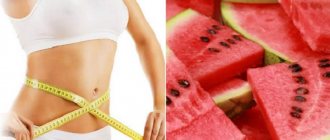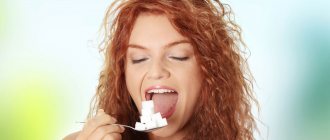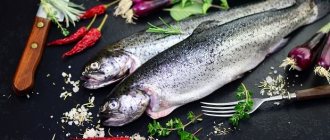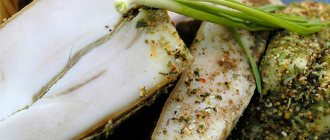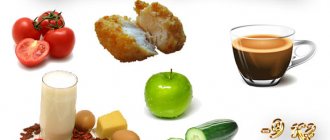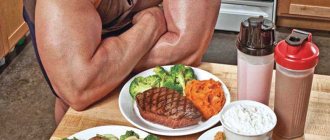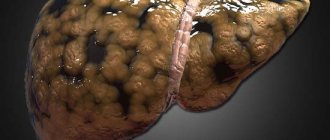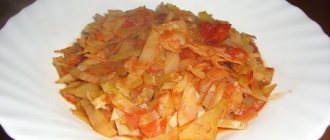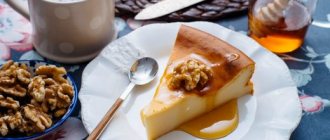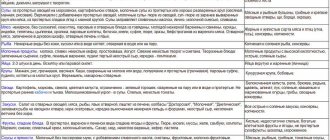Dietary properties of trout:
Trout is one of the most popular types of fish in dietary nutrition. Dishes made from it can be found in many cuisines of different countries. It is baked, fried, and salted. It contains a lot of fat, so this fish is great for grilling.
This fish is good with lemon, ginger, and various herbs. Trout, which is not high in calories, is also used in dietary nutrition. So, let's find out what its benefits are.
Anyone who diversifies their diet with this fish will be in a good mood. This is due to the composition of seafood, or more precisely, polyunsaturated and omega-3 acids.
They prevent the accumulation of toxins in the body, which, in fact, cause stress.
The body, poisoned by toxins and in a bad mood, notifies us of the need to cleanse it, but we, as a rule, do not understand this and begin to “fight” stress by eating sweets or drinking alcohol, which only worsens the situation.
This fish is an excellent source of phosphorus, which is essential for brain health. Polyunsaturated fatty acids and the popular omega-3 normalize the amount of cholesterol and successfully “cleanse” blood vessels of unnecessary fats. And the normal functioning of blood vessels is the stable functioning of all organs. This is especially true for the heart and brain. Scientists say that trout is very beneficial for the brain, since healthy blood circulation has a beneficial effect on it, preventing the development of senile dementia and even Alzheimer's disease.
Trout is a fatty fish. But, as they say, fat is different from fat, and those fats that are present in salmon meat are beneficial.
Composition and calorie content of the product
Red fish has high nutritional value due to its chemical composition, rich in vitamins and other useful elements.
It contains a complex of valuable substances:
- Omega-3;
- calcium;
- aliphatic amino acids;
- zinc;
- phosphorus;
- potassium;
- iodine;
- vitamin A;
- vitamin D;
- B vitamins;
- tocopherol;
- niacin;
- cholesterol;
- iron;
- sodium;
- potassium;
- iron;
- magnesium;
- fluorine;
- copper;
- sulfur;
- manganese;
- selenium;
- nickel.
The calorie content of the product is approximately 90 kcal per 100 grams.
How many calories are in trout?
Well, what exactly is the calorie content of this fish? And here it is:
Calorie content of fresh trout is:
97 kcal per 100 grams of product
Proteins, fats and carbohydrates (BJU) of fresh trout per 100 grams:
Proteins - 19.2
Fats – 2.1
Carbohydrates – 0.0
A lot of? But it contains protein - almost 20 g and fats - about 2 g. When we serve this fish with lemon, vegetables and herbs, we don’t have to think about extra pounds.
Well, how many calories are in this fish, cooked in different ways? And here's how much:
Trout calorie table, per 100 grams of product:
| Product | Calories, in kcal |
| calorie content of baked trout | 166,0 |
| calorie content of lightly salted trout | 201,5 |
| calorie content of steamed trout | 122,5 |
| calorie content of trout in the oven | 162,0 |
| calorie content of river trout | 129,4 |
| calorie content of boiled trout | 105,0 |
| salted trout calories | 203,0 |
| fried trout calories | 210,0 |
| Grilled trout calories | 198,0 |
Lightly salted trout. Chemical composition and nutritional value.
Nutritional value and chemical composition of “lightly salted trout”.
The table shows the nutritional content (calories, proteins, fats, carbohydrates, vitamins and minerals) per 100 grams of edible portion.
| Nutrient | Quantity | Norm** | % of the norm in 100 g | % of the norm in 100 kcal | 100% normal |
| Calorie content | 200 kcal | 1684 kcal | 11.9% | 6% | 842 g |
| Squirrels | 17.5 g | 76 g | 23% | 11.5% | 434 g |
| Fats | 13.9 g | 56 g | 24.8% | 12.4% | 403 g |
| Water | 56.5 g | 2273 g | 2.5% | 1.3% | 4023 g |
| Ash | 8.5 g | ~ | |||
| Vitamins | |||||
| Vitamin A, RE | 30 mcg | 900 mcg | 3.3% | 1.7% | 3000 g |
| Retinol | 0.017 mg | ~ | |||
| Vitamin B1, thiamine | 0.15 mg | 1.5 mg | 10% | 5% | 1000 g |
| Vitamin B2, riboflavin | 0.2 mg | 1.8 mg | 11.1% | 5.6% | 900 g |
| Vitamin B4, choline | 65 mg | 500 mg | 13% | 6.5% | 769 g |
| Vitamin B5, pantothenic | 1.94 mg | 5 mg | 38.8% | 19.4% | 258 g |
| Vitamin B6, pyridoxine | 0.2 mg | 2 mg | 10% | 5% | 1000 g |
| Vitamin B9, folates | 13 mcg | 400 mcg | 3.3% | 1.7% | 3077 g |
| Vitamin B12, cobalamin | 7.79 mcg | 3 mcg | 259.7% | 129.9% | 39 g |
| Vitamin C, ascorbic acid | 0.5 mg | 90 mg | 0.6% | 0.3% | 18000 g |
| Vitamin D, calciferol | 3.9 mcg | 10 mcg | 39% | 19.5% | 256 g |
| Vitamin D3, cholecalciferol | 3.9 mcg | ~ | |||
| Vitamin E, alpha tocopherol, TE | 2.5 mg | 15 mg | 16.7% | 8.4% | 600 g |
| Vitamin K, phylloquinone | 0.1 mcg | 120 mcg | 0.1% | 0.1% | 120000 g |
| Vitamin RR, NE | 10 mg | 20 mg | 50% | 25% | 200 g |
| Macronutrients | |||||
| Potassium, K | 221 mg | 2500 mg | 8.8% | 4.4% | 1131 g |
| Calcium, Ca | 40 mg | 1000 mg | 4% | 2% | 2500 g |
| Magnesium, Mg | 60 mg | 400 mg | 15% | 7.5% | 667 g |
| Sodium, Na | 2970 mg | 1300 mg | 228.5% | 114.3% | 44 g |
| Phosphorus, P | 243 mg | 800 mg | 30.4% | 15.2% | 329 g |
| Chlorine, Cl | 165 mg | 2300 mg | 7.2% | 3.6% | 1394 g |
| Microelements | |||||
| Iron, Fe | 2.5 mg | 18 mg | 13.9% | 7% | 720 g |
| Manganese, Mn | 0.851 mg | 2 mg | 42.6% | 21.3% | 235 g |
| Copper, Cu | 188 mcg | 1000 mcg | 18.8% | 9.4% | 532 g |
| Molybdenum, Mo | 4 mcg | 70 mcg | 5.7% | 2.9% | 1750 g |
| Selenium, Se | 12.6 mcg | 55 mcg | 22.9% | 11.5% | 437 g |
| Fluorine, F | 430 mcg | 4000 mcg | 10.8% | 5.4% | 930 g |
| Chromium, Cr | 55 mcg | 50 mcg | 110% | 55% | 91 g |
| Zinc, Zn | 0.7 mg | 12 mg | 5.8% | 2.9% | 1714 g |
| Essential amino acids | |||||
| Arginine* | 1.243 g | ~ | |||
| Valin | 1.07 g | ~ | |||
| Histidine* | 0.611 g | ~ | |||
| Isoleucine | 0.957 g | ~ | |||
| Leucine | 1.688 g | ~ | |||
| Lysine | 1.907 g | ~ | |||
| Methionine | 0.615 g | ~ | |||
| Threonine | 0.911 g | ~ | |||
| Tryptophan | 0.233 g | ~ | |||
| Phenylalanine | 0.811 g | ~ | |||
| Nonessential amino acids | |||||
| Alanin | 1.256 g | ~ | |||
| Aspartic acid | 2.127 g | ~ | |||
| Glycine | 0.997 g | ~ | |||
| Glutamic acid | 3.1 g | ~ | |||
| Proline | 0.734 g | ~ | |||
| Serin | 0.847 g | ~ | |||
| Tyrosine | 0.701 g | ~ | |||
| Cysteine | 0.223 g | ~ | |||
| Sterols (sterols) | |||||
| Cholesterol | 108 mg | max 300 mg | |||
| Saturated fatty acids | |||||
| Saturated fatty acids | 1.149 g | max 18.7 g | |||
| 14:0 Miristinovaya | 0.185 g | ~ | |||
| 16:0 Palmitinaya | 0.815 g | ~ | |||
| 18:0 Stearic | 0.148 g | ~ | |||
| Monounsaturated fatty acids | 3.254 g | min 16.8 g | 19.4% | 9.7% | |
| 16:1 Palmitoleic | 0.701 g | ~ | |||
| 18:1 Oleic (omega-9) | 1.44 g | ~ | |||
| 20:1 Gadoleic (omega-9) | 0.28 g | ~ | |||
| 22:1 Erucic (omega-9) | 0.83 g | ~ | |||
| Polyunsaturated fatty acids | 1.499 g | from 11.2 to 20.6 g | 13.4% | 6.7% | |
| 18:2 Linolevaya | 0.175 g | ~ | |||
| 18:3 Linolenic | 0.155 g | ~ | |||
| 18:4 Steoride Omega-3 | 0.064 g | ~ | |||
| 20:4 Arachidonic | 0.189 g | ~ | |||
| 20:5 Eicosapentaenoic acid (EPA), Omega-3 | 0.202 g | ~ | |||
| Omega-3 fatty acids | 1.068 g | from 0.9 to 3.7 g | 100% | 50% | |
| 22:5 Docosapentaenoic acid (DPA), Omega-3 | 0.183 g | ~ | |||
| 22:6 Docosahexaenoic acid (DHA), Omega-3 | 0.528 g | ~ | |||
| Omega-6 fatty acids | 0.364 g | from 4.7 to 16.8 g | 7.7% | 3.9% |
The energy value of lightly salted trout is 200 kcal.
Primary Source: Created in the application by the user. Read more.
** This table shows the average levels of vitamins and minerals for an adult. If you want to know the norms taking into account your gender, age and other factors, then use the “My Healthy Diet” application.
How is trout good for weight loss?
Of course, the calorie content of this fish is largely determined by the method of its preparation. Its energy value can range from 88 to 200 kilocalories.
This fish can be safely classified as a dietary product. There are many diets based on it; it is rich in protein. There is a special diet for trout. It is very popular because it is not only effective, but also quite tasty.
This diet is divided into two stages (its total duration is 10 days). During the first stage, a person can evaluate the first results and find out whether this type of weight loss is suitable for him. The main stage is the second. It lasts 7 days. During this time you can lose up to 5 kilograms. The diet consists of eating trout 3 times a day.
In addition to it, you can also eat seafood, eggs, vegetables, and drink green tea. In total, they eat 4 times during the day (the last meal is no later than 17.00). With such a diet, you should drink as much as possible - water promotes cleansing. By following all the rules, you can get rid of 5 kilograms. At the same time, this fish gives the body the necessary minerals and saturates well.
What does caloric content depend on?
The energy value is determined by the variety of varieties and processing methods. The calorie content in its raw form with a low fat content is 88 kcal based on 100 g of product. The nutritional value of fatty varieties reaches 231 kcal/100 g.
The calorie content of boiled trout is about 107 kcal/100 g. The number of calories in baked fish is approximately 184 kcal/100 g, since during cooking the liquid contained in the trout meat evaporates and the dry mass of the dish increases.
The energy value of salted and dried fish ranges from 185 kcal/100 g to 250 kcal/100 g, depending on the amount of vegetable oil added.
The calorie content in salmon caviar is 245 kcal per 100 grams of product taken.
Recipe? Recipe!
What can be cooked from this fish? Yes, a lot of things! Here's a simple recipe for you:
Trout with sour cream:
We offer our readers the following recipe for preparing this fish. The dish turns out surprisingly tender and really tasty.
Products needed for cooking:
- Trout (fillet)
- Sour cream - 3 cups
- Garlic - 1 clove
- Parsley
- Salt
- Black pepper (to taste)
Preparation:
The fish fillet is cut into large pieces (in the shape of flat squares) 8-10 cm in size. Then the fish should be salted and peppered to taste. The garlic is finely chopped, the herbs are chopped - after which it is all mixed with sour cream and salted.
Place the cooked pieces of fish in a preheated frying pan with oil. Each piece should first be fried on one side for 5 - 7 minutes, then carefully turn it over and, using a spoon, place the prepared mixture of herbs, garlic and sour cream on the fried side. Then the fish is fried for about 5 - 7 minutes. The fish is decorated and the dish can be served. It is served still hot. And enjoy this dish.
BJU indicators in trout

Energy value per 100 grams:
- proteins 17.5 g;
- fats 2 g;
- carbohydrates 0 g;
- water 30 g.
Be sure to read: Pike-perch fish: benefits and harms, how many calories, how to reduce calories, is it possible to lose weight
Trout, like all fish, does not contain carbohydrates, and water makes up 70% of its mass.
Benefits and harms of the product
Trout is not able to survive in polluted waters, and this indicates its safety for human life and health.
Delicacy fish has many useful qualities:
- activates brain activity, improves memory and thought processes;
- reduces the risk of formation of atherosclerotic plaques;
- tones the body, relieves the feeling of lethargy and exhaustion;
- normalizes the functioning of the nervous system;
- helps reduce blood cholesterol levels;
- stops the growth of tumors, acts as a preventive agent for cancer;
- regulates blood pressure in hypertension;
- improves stress and depression;
- has a positive effect on diabetes;
- strengthens the heart muscle;
- prevents the development of heart attack and stroke
- eliminates unpleasant symptoms of psoriasis;
- easily digestible, saturates the body with useful substances;
- has a beneficial effect on children's growing organism.
In addition, due to its low calorie content, red fish from the salmon family serves as an indispensable component of the diet when losing weight.
Those who want to get rid of extra pounds can add it to their nutritious diet without fear of gaining weight, while receiving a complex of valuable chemical elements.
Despite the fact that this is a practically safe food product, some points should be taken into account when consuming:
- improper or prolonged storage can spoil the quality of the product and cause harm to the body, therefore it is recommended to use fresh fish in the diet;
- river varieties require careful heat treatment, as they may contain parasites;
- When preparing trout for food, it is necessary to remove the head, due to the accumulation of harmful elements present in the habitat in this part of the product.
